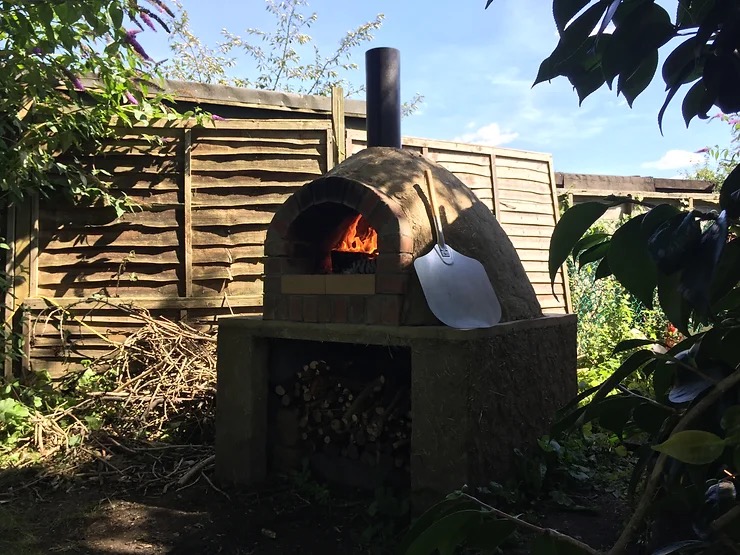In part 1 we built the oven plinth and base. Part 2 covered the oven wall, mixing the cob and we finished by seeing if the brick arch would be self-supporting…
Fortunately it stayed up so the next task was to scoop out the sandcastle. This was also a bit nerve-wracking – we had no way of knowing whether the walls would collapse when their support was removed.
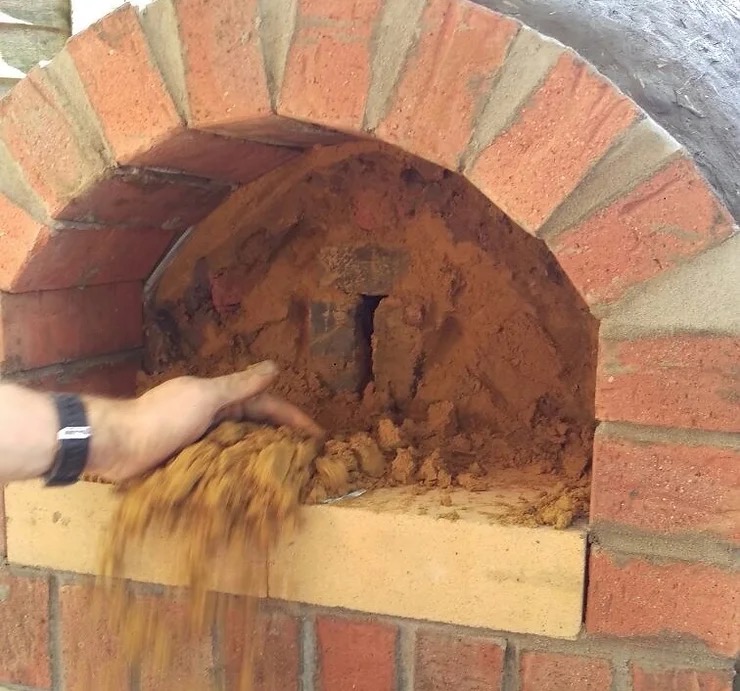
Below you can see the newspaper – now stuck to the inside of the clay oven wall.
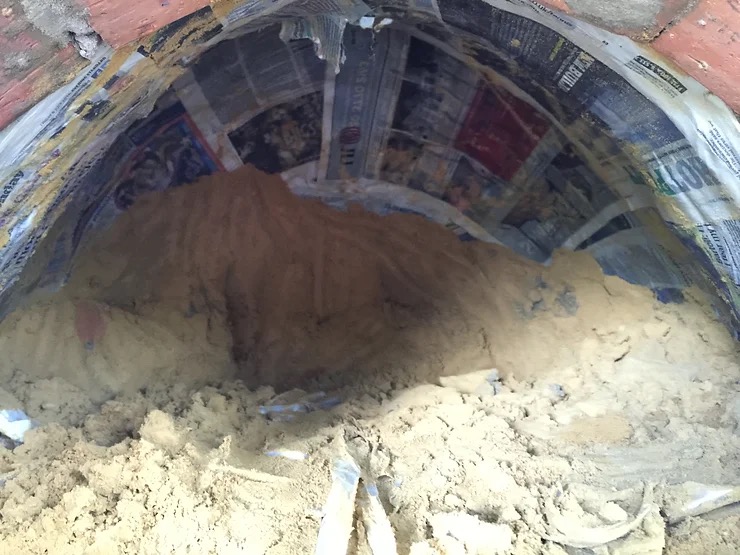

Here’s the finished oven, drying out:
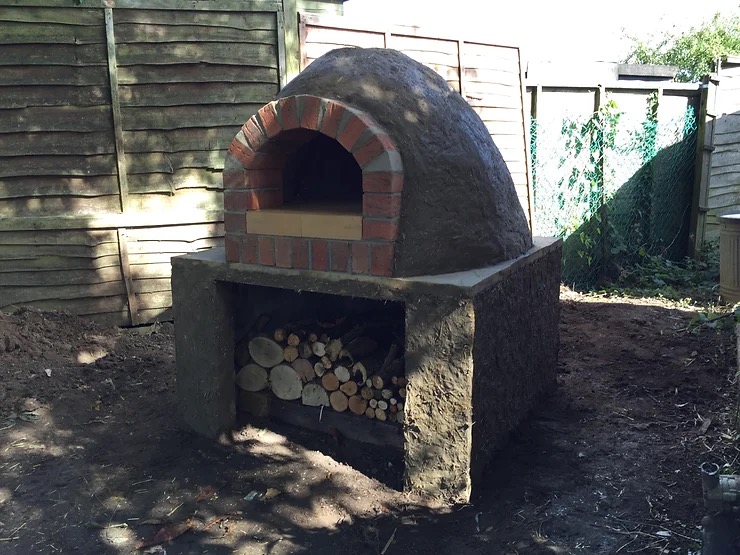
As you can see we plastered some cob over the concrete block base to hide its high energy input, unsustainable, corporate greed concrete construction technique. I guess you can call this greenwashing. It did however make it look nice 🙂
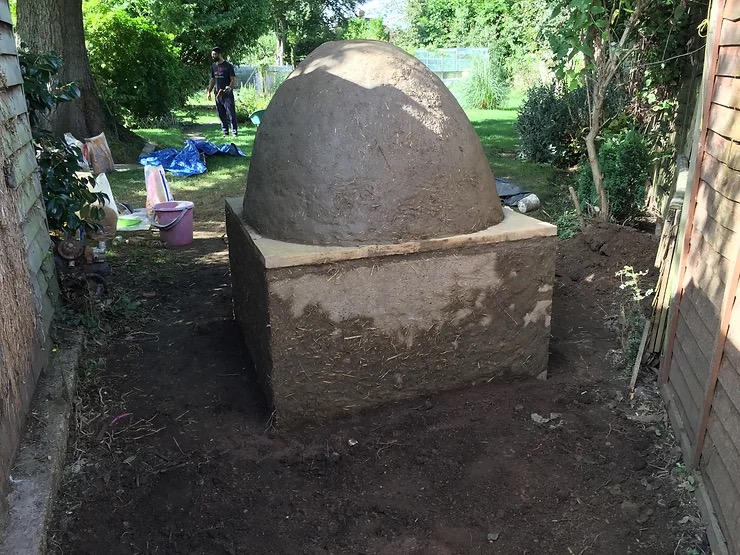
After a few more days of drying out, we lit our first small fire to gently warm things up.
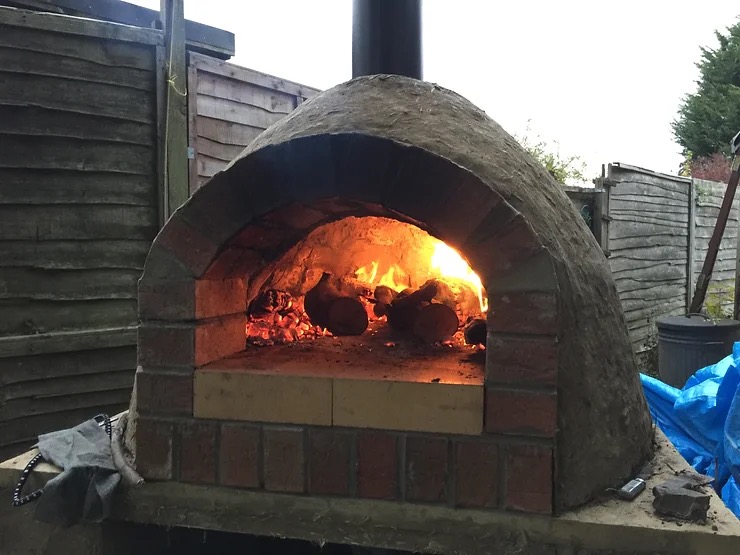
I made a couple of doors from a piece of oak board and a metal sheet to reflect the heat back inside. Needless to say, the first one burnt through after a momentary lapse of attention. The second one is still in use today.
Show me the pizzas!
Ok, ok, we get it. To be honest, it’s a bit of a blur… So many pizzas, so little time…
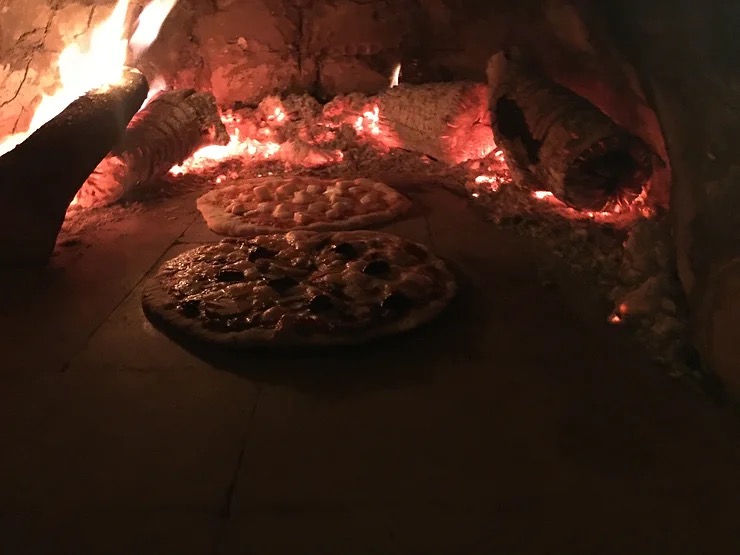
Cooking on it takes a bit of planning. The fire needs to be lit around 3-4 hours before you want to use it. It’s the retained heat in the oven walls that does the cooking so it needs time to get up to temperature.
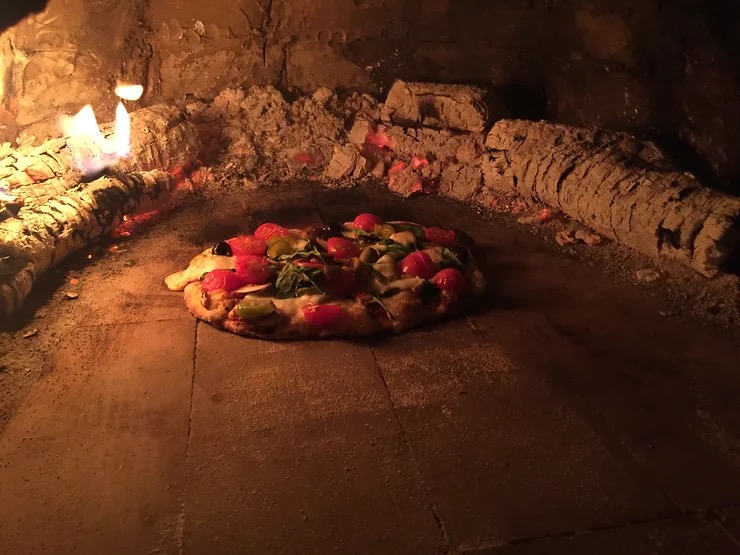
There’s a bit of smoke when the wood first catches but if you’re using well-seasoned wood, after just 3 or 4 minutes, it’s practically smokeless.
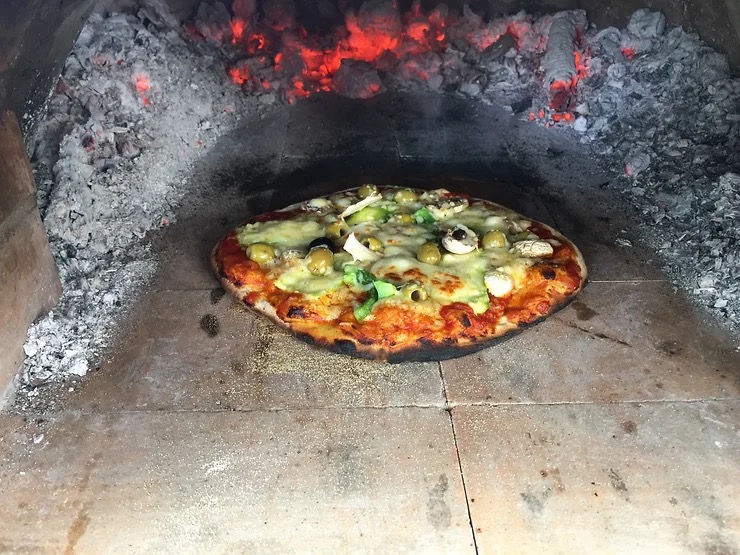
The oven has two settings – ‘cold’ and ‘thermonuclear’. Pizzas cook very fast and need constant attention (and a bit of practice!)
We use short-handled metal pizza peels to get them in and out. We find it’s best to make up the pizza on the peel and then slide it in. We have two peels to keep things moving. A sprinkling of semolina on the peel helps them slide off easily. The pizzas need to be positioned fairly near to the door and rotated during cooking.
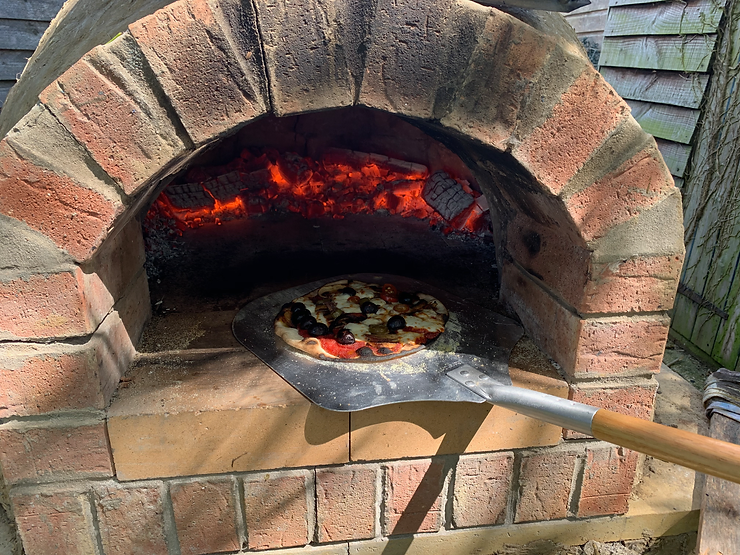
They taste fantastic!
Community spirit
Looking back, the cob oven build was brilliant fun. We were blessed with some help from our ‘crew’ and special thanks go to Abu Jaan, Nadeem, Hamza, Ibrahim, Ali, Hammad, Kostas, and Sulaiman.
Five years later...
Yes it really has taken that long to write this.
Five years on, and the oven is still going strong. We keep it covered with a tarp when it’s not in use to protect it against the elements. Remember – cob isn’t waterproof! This is one consideration when choosing a site for the oven (unless you’re planning an attractive cover) – you don’t want it in direct sight.
If you’re thinking of your own build, we’d recommend:
Doing it with friends – Whilst it might have been possible to do this on our own, it’s hard work! It’s not only easier but also a great deal of fun when you do it with friends.
Planning ahead – You don’t need a spreadsheet but you do want to have a sense of the main tasks, sequence and timing. Our build was in two distinct stages – (1) the plinth – slow and painstaking and (2) the oven – great fun!
Sourcing materials up front – Once you’re into the fun part, you want to keep going so it’s frustrating when you run out of clay or sand…
Using firebricks – They were expensive, but they do make a lovely flat surface that’s easy to keep clean. And they’re super robust with no flaking or cracking – they’re still like new.
Thinking carefully about the base / plinth – That oven is heavy so it needs to be strong and robust or the cracks will start to show… The height is also really important for a comfortable cooking experience.
Thinking about a work surface – If we build another one, we’ll probably make the plinth wider to create a permanent working surface. We find we need somewhere to place peels, red hot oven trays, cool drinks etc.
And if you do build one, enjoy the experience – and we’d love to see how you get on!
